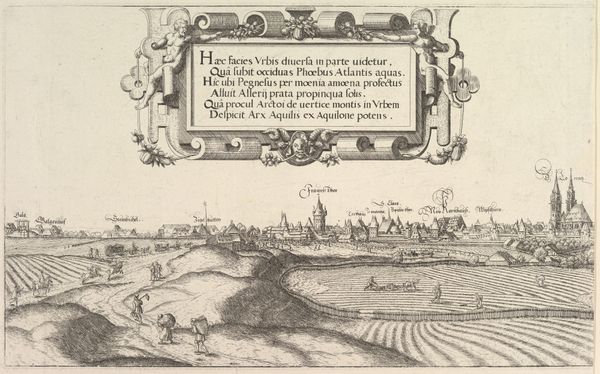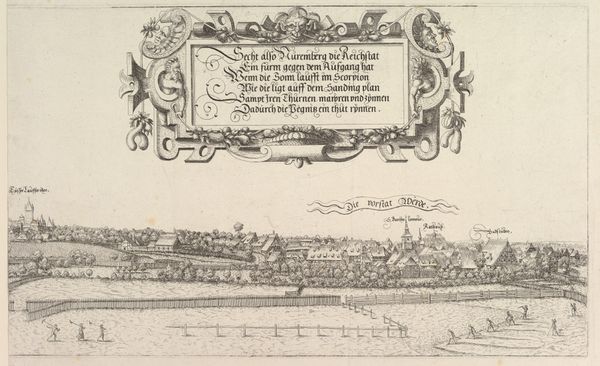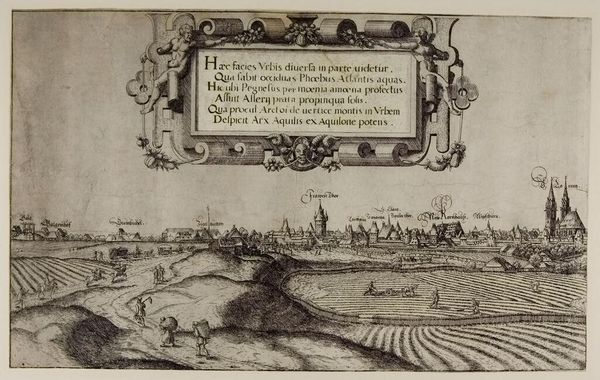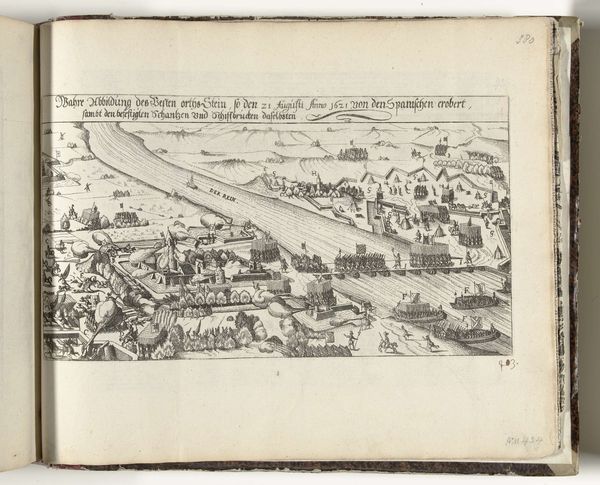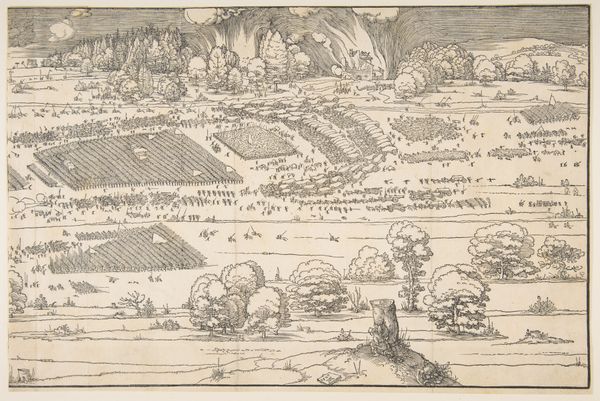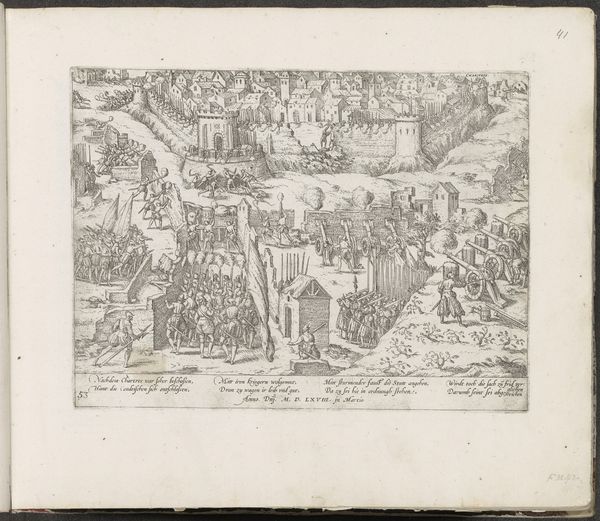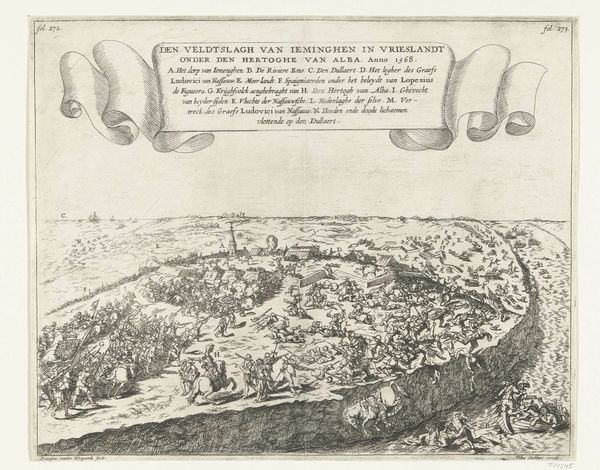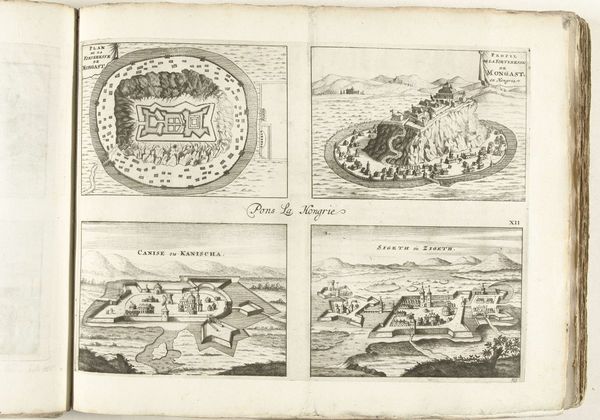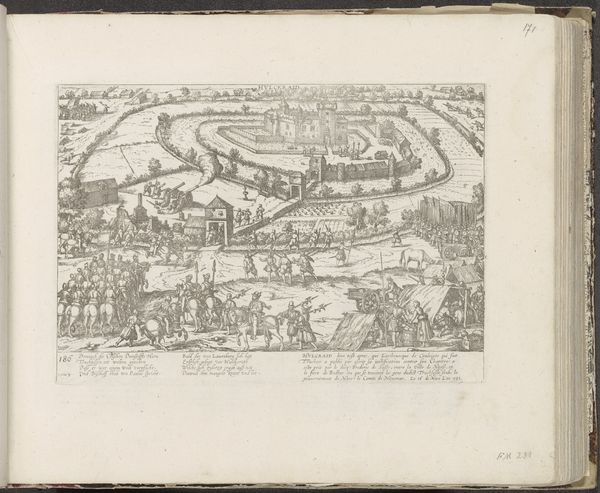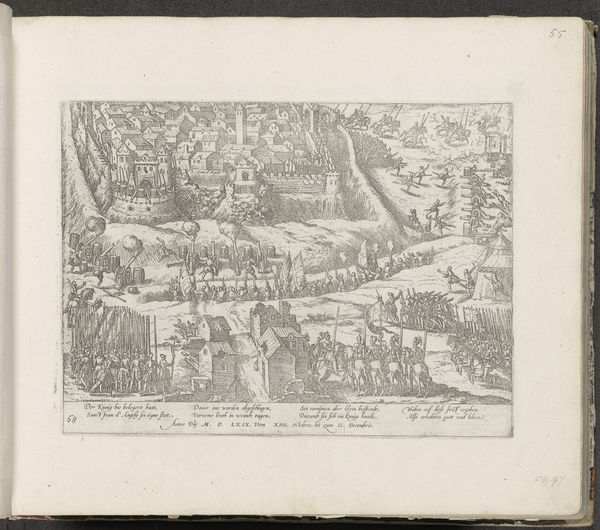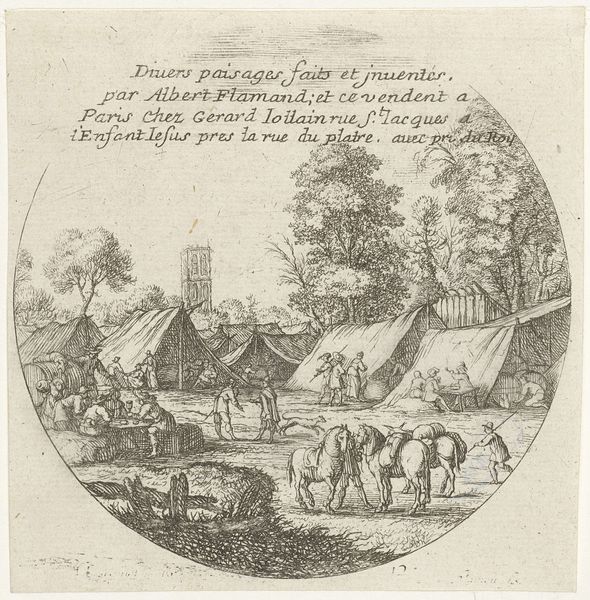
drawing, print, etching, engraving
#
drawing
#
medieval
# print
#
etching
#
landscape
#
perspective
#
cityscape
#
northern-renaissance
#
engraving
#
building
Dimensions: Sheet (left): 12 1/16 × 19 5/16 in. (30.7 × 49 cm) Sheet (center): 12 3/16 in. × 21 in. (31 × 53.4 cm) Sheet (right): 12 3/16 × 19 7/16 in. (31 × 49.4 cm)
Copyright: Public Domain
Curator: Alright, let's take a look at Hanns Lautensack’s "View of Nuremberg from the West," created around 1552. It's an etching and engraving, a print, currently residing at the Metropolitan Museum of Art. Editor: My first thought? Intricate. Seriously, look at the density of detail. The landscape almost feels like a woven tapestry with tiny figures populating the landscape; the way the rooftops of the buildings march forward…it's an ode to order and perhaps an over-idealized rendering of reality? Curator: The etching technique really lends itself to that precision. It’s almost architectural in its exactness, capturing the sense of civic pride and confidence characteristic of the Northern Renaissance. We have the perspective theme right there, that deep urge to order and categorize. Editor: Definitely. Perspective was key at the time. Do you notice that the typography seems so…authoritative, inscribed almost like an ancient oracle announcing its presence from a scroll floating high above the depicted topography. Curator: It serves as an inscription explaining the perspective. And beyond the immediate appearance of a realistic portrait, there's a layer of symbolism. Editor: The cityscape itself functions as a symbol—an embodiment of the era's aspirations toward urban sophistication and prosperity. I wonder, too, about Nuremberg’s identity, captured at this specific point in time. Every building, every road, contributes to the narrative of a place striving for its own unique greatness in the medieval/early modern Europe. The architecture looms very heavy as an anthropomorphic object, as a symbol of people and continuity through the ages, like a stage for future generations. Curator: Exactly, and Lautensack doesn't just show the physical space. He communicates a very deliberate understanding of the urban space as more than geography: it carries with it a sense of authority, order, purpose...The print itself is less of an image, perhaps, and more like an emblem of social cohesion. It’s a claim. "This is us; this is what we have built, how we've thrived." It resonates down the ages! Editor: Looking closer makes me ponder that it serves as more than a celebration; it documents what a medieval/renaissance eye considered worth celebrating—the literal and figurative structures of the city. Curator: Ultimately, that might be its greatest feat; capturing that pivotal moment when a medieval cityscape, self-aware and striving, steps into its Renaissance light. Editor: I think it would be amazing to compare it to pictures taken from above using more current means of surveying. That's where true art begins - and here's the start...
Comments
No comments
Be the first to comment and join the conversation on the ultimate creative platform.
